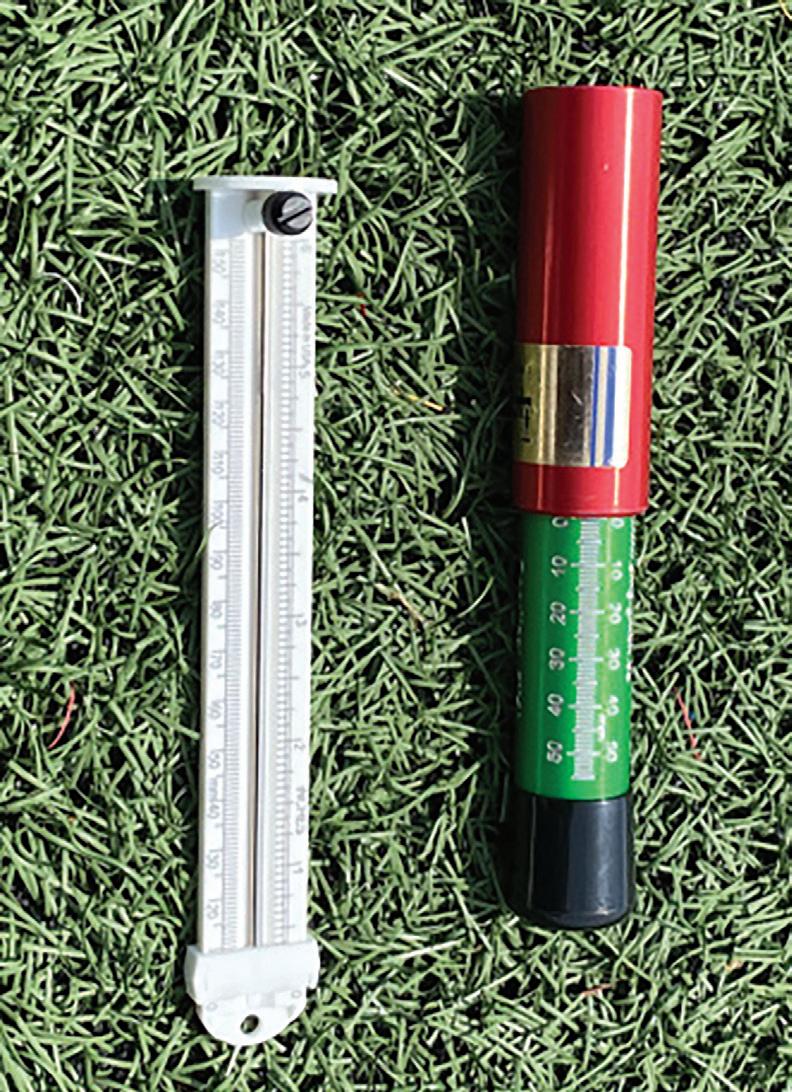
4 minute read
Column: Synthetic Turf
Simplifying Modern Day Synthetic Turf Maintenance
By Arthur Eddy, ASLA, LEED AP
Advertisement
Over the past fifteen years, I have been tasked with interpreting the complexities and science behind the system of synthetic turf. I have spent countless hours looking at fiber, understanding infills, looking at mixes and ratios of infills and have dived into the benefits that shock pads have provided to turf systems. Due to the scrutiny of the system, and like everything in the modern world, we have been bombarded with new products that we evaluate all over again in constant search for the best product that will produce the best results. At times this exploration can be tireless.
A colleague of mine pulled me aside and suggested that I just need to simplify the process. I have been so focused on the science, testing and performance that I lost sight of some of the most basic principles to maintaining the system. I have gotten older and put my career in hyper-drive which has forced me to do everything I can to simplify. My wife and I downsized our house to simplify our lives. I even threw out everything in my old wallet and got a new one so I can carry less. So how do you simplify synthetic turf maintenance? You need to look at what you do, how you do it, and what you need to make it happen.

Checking Infill Depth. Maintaining appropriate infill levels allows the field to perform, and the turf to stand up, as it should.
The principles of synthetic turf maintenance are simple and can be broken down into two simple concepts: lift the fibers and keep the infill at appropriate levels.
Infill is the structure that keeps the turf fibers upright which eliminates premature breakdown. The top of the fiber is the area where athletes interact with the surface. If the fiber is standing up, then the cleat can grab into the surface allowing for cutting and turning. The science and biomechanics behind the interaction of an athlete’s interaction with the surface is complicated, but the concept of keeping infill in the field at levels that allow the field to perform and the turf standing up as it should is simple.

A five-gallon bucket is one of the simplest and most versatile tools.
A simple way of making sure that the infill is right is to check infill depths regularly. This can be done with a one or three prong infill depth gauge. Using the gauge allows one to know the depth of infill in millimeters. Monitoring infill depths will allow for an understanding of where infill is migrating to and when additional infill will be needed. Synthetic fibers will breakdown at the area where there is no support for the fiber. The lower the support, the further down the fiber will start to wear out. Highuse areas can quickly wear when attention is not paid to those areas, and breakdown can occur when infill is not added. If you want to keep your field from premature breakdown, keep an infill gauge and check those high use areas.
One of the simplest and most versatile tools we use is a five-gallon bucket. It can carry paint if we are line-striping but is also used for water to wash the machine out. We use it to carry infill out to the field, throw trash into and pick up rocks when we walk around the field, and use it to carry out repair materials. When we are doing a repair or working on the machine it becomes our seat to give us some time off our feet. It’s amazing how much a simple thing can have such a large impact on our daily lives. Sometimes it great to sit back and look at the simplicity of how we can make a big impact. As maintainers of synthetic turf fields, some of the most basic processes have the largest impact. We know that we use complicated methods to care for the fields we maintain, but the addition of simple practices and tools can also have an impact. •

A simple way of making sure that the infill is right is to check it regularly with a one or three prong infill depth gauge.
Arthur Eddy is CEO of RePlay Maintenance in East Greenwich, Rhode Island.Connect with Art at Aeddy@replaymaintenanceusa.com or (877) 641-1819.


